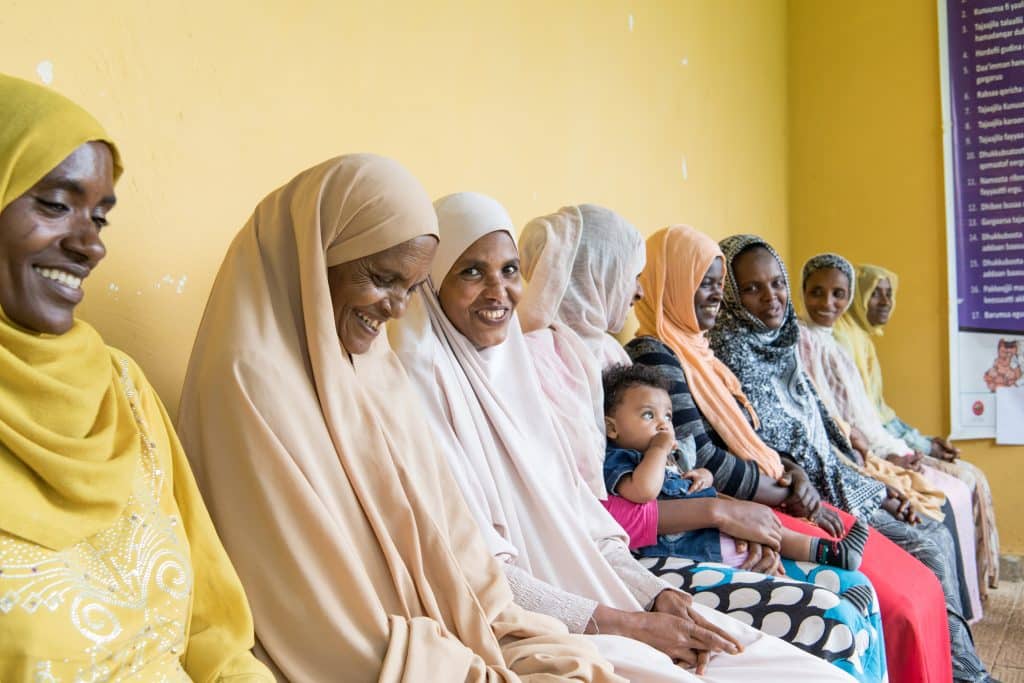As a learning organization in an ever-changing world, regular feedback from our grantee partners is essential to improving the way we work.
That is why every two years since 2004, the David and Lucile Packard Foundation asks grantees to reflect on our performance through a confidential survey conducted by the Center for Effective Philanthropy (CEP), which generates a Grantee Perception Report™ (GPR). In August 2020, CEP invited Packard Foundation active grantees to share feedback as part of this process. Consistent with previous years, 750 grantees completed the survey for a 58% response rate. These results are compared with results from previous years, with a dataset of more than 300 foundations whose grantees were also surveyed, as well as with a smaller cohort of 23 peer foundations who are similar to the Packard Foundation in scale and scope.
Key findings from our 2020 GPR are summarized below and the full report can be accessed on our website. We are grateful to every organization that took time to respond and value this check-in that helps us assess what we are doing well, and where we can do better.
These results come at an important time of reflection for the Foundation. We are currently exploring how the Foundation can better meet the challenges and needs of our world through a participatory process we are calling Vision to Strategy. This process, which you can read more about here, includes an examination of our mission and values and the development of a vision and strategic framework that clearly articulate how justice and equity show up in our work. Our GPR results—which we have discussed with our Board of Trustees, leadership team, and staff—are an important input into this process that will inform our grantmaking.
Key Findings and Our Commitments
Across most measures, grantees continued to share positive reflections of the Packard Foundation, including the impact on grantee fields, impact on organizations, and funder-grantee relationships. Within our cohort of peer foundations, we were particularly grateful to rank highest on exhibiting trust in grantees’ staff and exhibiting compassion for those affected by grantees’ work.
As in years past, the 2020 GPR highlighted areas where we can and should strengthen the way we work. We have identified four priority areas for improvement:
- Define what diversity, equity, and inclusion (DEI) means to the Packard Foundation and how we’re integrating justice and equity into our work. While grantees recognized the Packard Foundation’s commitment to DEI and ending racism, grantees asked that we clearly define what DEI means in our work. This question is central to our Vision to Strategy process, which is ongoing. We are also integrating justice and equity into our foundational values and developing a common vocabulary for diversity, equity, inclusion, belonging and justice to enable a shared understanding of what these values mean in our work. The latest update on our justice and equity work can be found here.
- Better understand who we are funding. U.S. grantee organizations led by people of color rated the Packard Foundation significantly lower than respondents at white-led organizations across several measures, including our awareness of organizational challenges, understanding partner context, transparency, and communications about DEI. This is important and humbling feedback. To understand our progress as we work to create more positive experiences for organizations led by and serving people of color and increase transparency and accountability for how we are advancing diversity, equity, inclusion, and justice in our grantmaking, we are encouraging U.S. non-profit grantees to provide demographic data through Candid, a nonprofit database created by GuideStar and the Foundation Center, to collect and learn from demographic data for U.S.-based 501c3 organizations. Using a well-known, well-established central repository that all funders could leverage helps reduce grantee burden and also allows us to improve as a sector.
- Provide more multi-year and general operating support grants. We know from past GPR results, as well as direct feedback from grantees, that longer-term, unrestricted commitments make it easier for grantees to do their work. While more multi-year grant dollars were awarded in 2020 than in previous years (from 2016 to 2020, the percentage of multi-year grant dollars awarded increased from 58 to 70%) the number of multi-year grants did not increase. Additionally, the largest proportion of grantee suggestions in the 2020 GPR were about providing more flexibility in the structure of our grants, including longer and unrestricted funding. We are examining the remaining barriers to making more multi-year and general operating support grants moving forward.
- Improve the alignment and regularity of communications on program theories of change. While ratings on the clarity of our communications about goals and strategies remained consistent with 2018 ratings and were in line with peer funders, ratings for the consistency of communications received from different sources dropped in 2020. As we wrap-up our Vision to Strategy process and refresh grantmaking goals, we are committed to exploring new ways to share power through working more hand-in-hand with partners to develop theories of change. Moving forward, we will identify where we can regularly share information on strategy pivots.
These actions are important, yet they are just the beginning steps we are taking to listen deeply and improve our operations and culture to better meet the changing needs of the world today. As always, we welcome feedback and questions about this latest GPR and our efforts to learn from it at [email protected].










